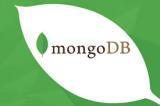MongoDB is a cross-platform, record oriented database that provides, high performance, high availability, and effortless scalability. MongoDB works on notion of collection and document.
Any relational database has a regular schema graph that indicates variety of tables and the relationship between these tables. While in MongoDB, there is no concept of relationship.
MongoDB Database
Database is a bodily container for collections. Each database gets its very own set of documents on the file system. A single MongoDB server typically has more than one databases.
Tables in MongoDB as Collection:
Collection is a team of MongoDB documents. It is the equal of an RDBMS table. A collection exists within a single database. Collections do no longer put in force a schema. Documents within a series can have unique fields. Typically, all archives in a collection are of comparable or associated purpose.
Document:
A report is a set of key-value pairs. Documents have dynamic schema. Dynamic schema means that files in the equal collection do not want to have the same set of fields or structure, and frequent fields in a collection's archives may additionally maintain exceptional kinds of data.
Advantages of MongoDB over RDBMS:
Schema less − MongoDB is a record database in which one series holds exceptional documents. Number of fields, content material and size of the file can fluctuate from one record to another. Structure of a single object is clear. No complex joins.
Deep query-ability
MongoDB helps dynamic queries on archives the usage of a document-based query language it is nearly as effective as SQL. Tuning.
Ease of scale-out − MongoDB is easy to scale
Conversion/mapping of application objects to database objects no longer needed. Uses internal memory for storing the (windowed) working set, enabling quicker get right of entry to of data.
Where to Use MongoDB?
Big Data
Content Management and Delivery
Mobile and Social Infrastructure
User Data Management
Data Hub





